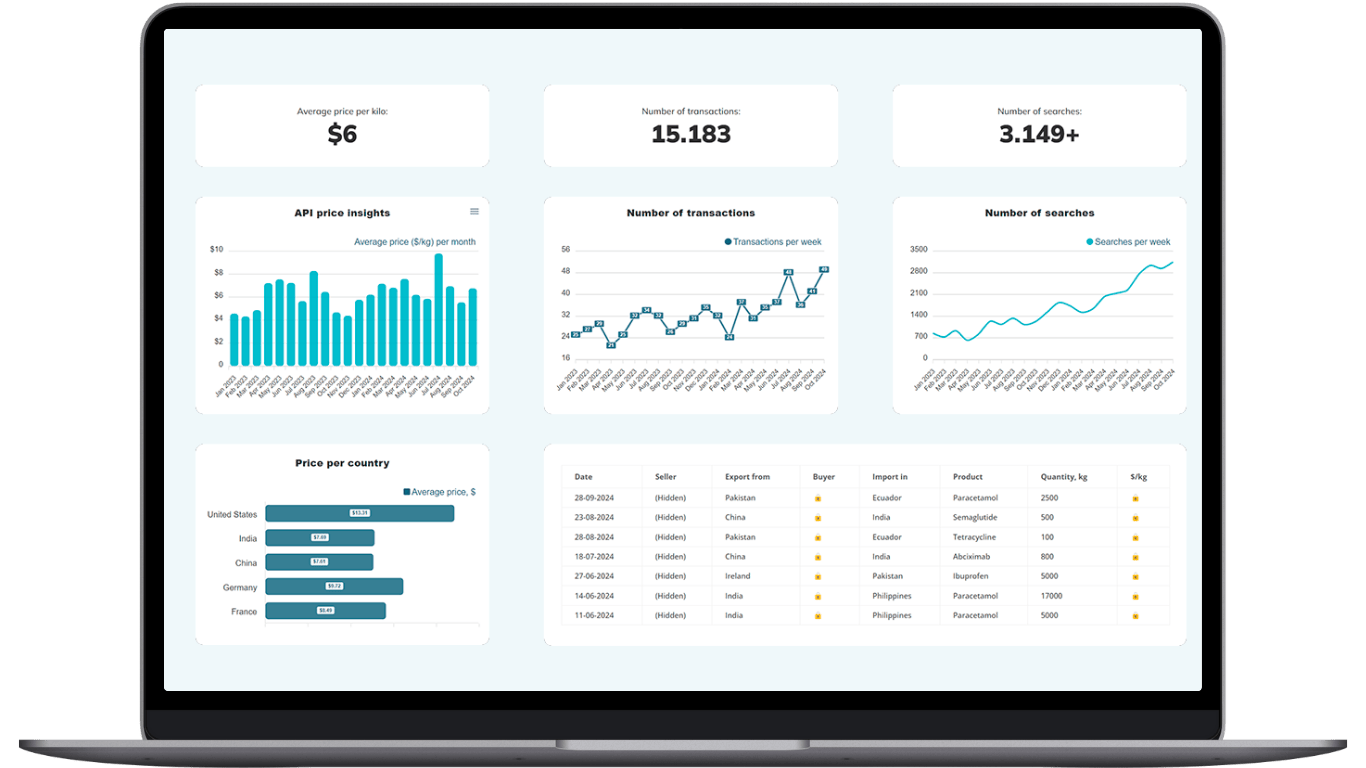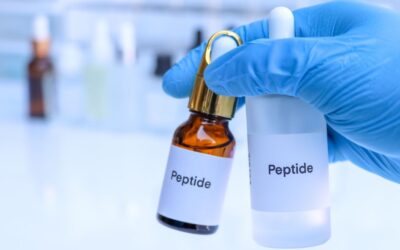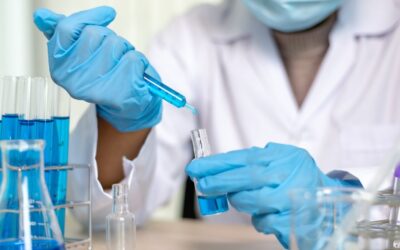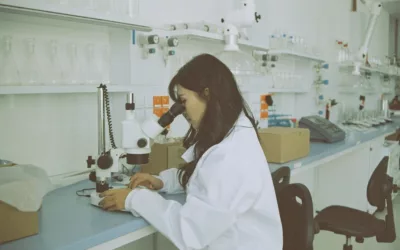Understanding the Different Pathways to Drug Development:Biological vs. Chemical Synthesis

Priya Bhat | Posted on July 29, 2025
When it comes to drug development, the synthesis of Active Pharmaceutical Ingredients (APIs) is one of the most critical steps. Depending on the drug, the process can either be biological or chemical. Both methods play crucial roles in the creation of new medications, but they are very different in their approach, scalability, and the types of drugs they produce.
For professionals involved in API sourcing, business development, and procurement, understanding these differences is key when making decisions that affect cost, quality, and market potential.
Table of contents
What Is Chemical Synthesis?
Chemical synthesis involves using chemical reactions to create small molecules from simpler compounds. This process is typically employed for small molecule drugs, which are often used in treating diseases like cancer, cardiovascular diseases, and infections.
Pros:
- More cost-effective and well-established.
- Generally easier to scale.
- Produces small molecules that are easier to store, transport, and manufacture.
Cons:
- Some chemical processes can lead to the formation of impurities.
- Environmental impact from the chemicals used in the process.
Chemical synthesis is highly efficient and allows manufacturers to produce large quantities of consistent APIs. It is the go-to method for generics and established drugs.
What Is Biological Synthesis?
Biological synthesis refers to the use of biological organisms (such as bacteria, fungi, or yeast) or enzymes to produce molecules. This process is used to create biologics, such as monoclonal antibodies, proteins, and vaccines.
Pros:
- Can produce highly complex molecules that chemical synthesis can’t.
- Biologics are typically more targeted and have fewer side effects.
- With biological processes, there’s potential for better bioavailability and bioequivalence.
Cons:
- Higher cost due to more complex production.
- Scalability issues, especially in the early stages of development.
- More sensitive to production environment and can be subject to contamination.
Biological synthesis is the preferred method for developing biopharmaceuticals, including biologics like biosimilars and new-generation cancer treatments.
Biological vs. Chemical Synthesis: Core Differences
| Factor | Chemical Synthesis | Biological Synthesis |
| Molecule Type | Small molecules (APIs) | Large molecules (Biologics) |
| Scalability | High scalability and lower cost | Lower scalability and higher cost |
| Complexity | Less complex, ideal for simple molecules | Highly complex, ideal for biologics |
| Environmental Impact | Can have environmental risks | More sustainable, but needs tight control |
| Production Speed | Faster, well established | Slower, but growing with advancements |
Bioavailability and Bioequivalence: Key Considerations
Bioavailability refers to the extent and rate at which the active drug ingredient is absorbed and reaches systemic circulation. This is a crucial concept when discussing drug effectiveness.
- For Chemical Synthesis: The formulation and synthesis method directly influence the drug’s bioavailability. The way small molecules are synthesized affects their absorption, distribution, metabolism, and excretion (ADME). For example, poorly soluble APIs may require formulation changes (e.g., using solubilizing agents) to improve bioavailability.
- For Biological Synthesis: Bioavailability in biologics is more complex because of the size and structure of the molecules. Biologics, such as monoclonal antibodies, are typically administered via injections (as they cannot be orally absorbed due to their size). The complexity of biologics requires careful consideration of factors like half-life, stability, and delivery methods, which influence bioavailability.
Bioequivalence ensures that a generic drug has the same therapeutic effect as its branded counterpart. This concept is particularly important in chemical synthesis for the development of generic drugs.
- For Chemical Synthesis: When creating generic versions of branded drugs, bioequivalence is essential. This means the generic drug must deliver the same concentration of active ingredients in the bloodstream within the same timeframe, ensuring that it provides the same therapeutic effects as the brand-name drug.
- For Biological Synthesis:Biosimilars are the counterpart to generics for biologics. Since biologics are larger and more complex, bioequivalence is not the right term here. Instead, biosimilars must demonstrate similarity to the reference biologic in terms of efficacy, safety, and immunogenicity, as well as how the drug is processed and delivered.
Impact on CDMO Collaboration
The synthesis method you choose will have a direct impact on the CDMO (Contract Development and Manufacturing Organization) you collaborate with. Here’s what you need to consider when choosing a CDMO for your project:
- What synthesis method do they specialize in?
Make sure the CDMO has the right expertise for your product’s needs. For biologics, look for a CDMO with experience in biological synthesis and biotechnology. For small molecules, chemical synthesis expertise is crucial. - What’s the scale of production?
Large-scale production might be easier for chemical synthesis, but biologics often require specialized equipment and facilities. - What’s their experience in tech transfer?
Whether you’re transitioning from lab to commercial-scale production or changing synthesis methods, ensure your CDMO can accommodate tech transfers effectively, especially for biologics. - What’s the CDMO’s regulatory compliance?
For both synthesis types, regulatory approval is key. Check that the CDMO adheres to necessary regulatory requirements (such as FDA, EMA, ICH) for the synthesis method being used.
Conclusion
Choosing the right synthesis method is more than just a technical decision: it’s central to the success of your project. Whether you’re sourcing small molecule APIs or biologics, your choice of synthesis process impacts everything from cost and scalability to regulatory compliance. Understanding these differences and considering bioavailability and bioequivalence when selecting a CDMO can ensure you’re on the path to success.
For sourcing the best suppliers and CDMOs, use platforms like Pharmaoffer to connect with verified partners that align with your project needs.

Make Smarter API Decisions with Data
Access exclusive insights on global API pricing, export/import transactions, competitor activities and market intelligence.
What is the main difference between biological and chemical synthesis in drug development?
Chemical synthesis involves creating small molecules through chemical reactions, ideal for producing generics and established drugs. Biological synthesis, on the other hand, uses organisms like bacteria or yeast to produce large, complex molecules, often used in biologics like monoclonal antibodies and vaccines.
Which synthesis method is more cost-effective for large-scale production?
Chemical synthesis is typically more cost-effective and scalable due to its simpler processes, making it ideal for high-volume production of small molecules. Biological synthesis tends to be more costly and less scalable, especially in the early stages of production.
How do bioavailability and bioequivalence differ between chemically synthesized and biologically synthesized drugs?
Bioavailability in chemical synthesis is impacted by the formulation and synthesis method, affecting drug absorption and distribution. For biologics, bioavailability is more complex due to the size and delivery methods, such as injections. Bioequivalence is crucial for generics of small molecules, while biosimilars are required for biologics.
Why is the choice of synthesis method important when selecting a CDMO?
The synthesis method impacts the CDMO's expertise, scalability, and regulatory compliance. Chemical synthesis CDMOs specialize in small molecules, while biological synthesis requires CDMOs experienced in biotechnology and complex production environments.
What are the environmental impacts of chemical and biological synthesis?
Chemical synthesis can have a higher environmental impact due to the chemicals used in the process. Biological synthesis, while more sustainable, requires careful environmental control to prevent contamination, making it less straightforward to scale.






Check out all other blogs here!